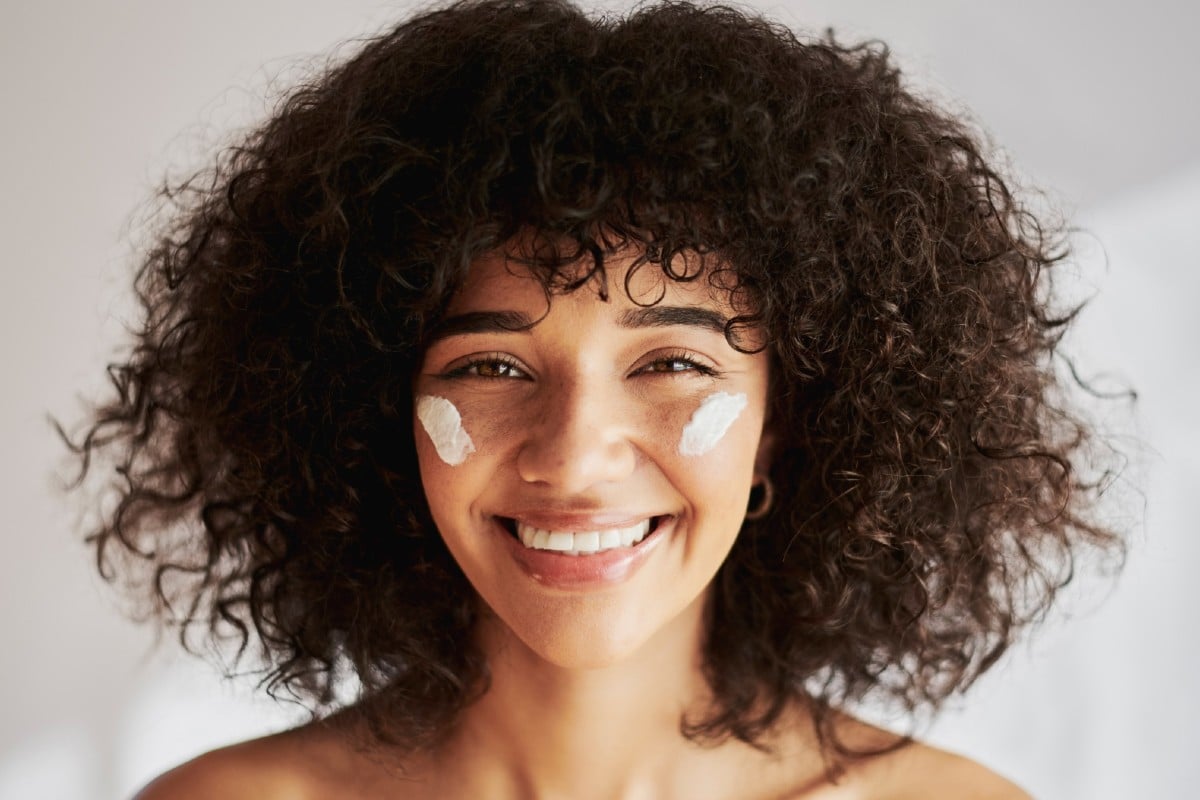This article has been reviewed by Dr. Lilly-Rose Paraskevas, a board-certified dermatologist and member of the American Academy of Dermatology and the American Society for Dermatologic Surgery.
Do your dreams currently revolve around getting soft, hydrated, plump skin? Tasked with the opposite? If sandpaper comes to mind, you could be victimized by transepidermal water loss (TEWL). Yes, I know it sounds way too scientific, and chemistry did not have you hyped in school. But if you want to prevent TEWL from victimizing you forevermore, it’s time to get pally with the science of skincare. Because you deserve to gain the skin of your dreams. Read on to learn how to prevent transepidermal water loss and find out the golden nuggets of wisdom that will support you in reaching the land of hydration.
To find out how transepidermal water loss affects the skin, we turned to board-certified dermatologist Lilly-Rose Paraskevas, MD, FAAD. Below is everything you need to know about transepidermal water loss and the best ways to prevent TEWL from adversely affecting your skin.
What is transepidermal water loss?
Briefly, transepidermal water loss is the process of your skin losing much-needed water. Here’s the science: skin is built of different layers—nothing too Shrek-like, though! You’ve got the epidermis as an outer layer, the dermis underneath, and the hypodermis at the base.
The epidermis is super important as it keeps the moisture we need in and the environmental aggressors out. It also contains the lipid barrier, a group of oils that keep water locked in. If that barrier gets compromised, then water from the lower layers can escape through your skin and evaporate in the air. This process is TEWL, and to some extent, it’s perfectly normal. It’s how our bodies can regulate temperature and hydration. But if water leaves faster than it can be replaced, that’s when your skin can appear dry, dull, and irritated. So, what causes transepidermal water loss to wreak havoc, and how can we stop it from happening?
What makes TEWL worse?
- Dry air
- Hot temperatures
- Skin trauma, sunburn
- Inflammatory skin conditions
- Harsh skincare ingredients
- Overuse of acids in skincare
- Drinking alcohol and coffee
- Not drinking enough water
How to prevent transepidermal water loss
Take a look at your cleansers
What kind of cleanser are you using? If it foams, contains sulfates, alcohol, or anything high on the PH scale, it could be sabotaging your lipid barrier, allowing TEWL to run riot. Thus, the first step to prevent transepidermal water loss is using a cleanser that aims to hydrate and is gentle on the skin. Oils, balms, and creams will fit the bill better. I’ll go into the ingredients to look out for in the next points! Alongside this, make sure you’re not over-cleansing your skin. Having one cleanse in the morning and a double cleanse in the evening should work just fine.
Add in hydration
You want to draw hydration back into your skin to replenish what you’ve lost. If you want science, we need humectants—compounds that bind and attract water. A hydrating serum is perfect for this. Look for ingredients like hyaluronic acid or glycerine. These ingredients give you that much-coveted plump, dewy look. Every brand wants you to feel hydrated, too, so you can find something helpful, no matter your price point.
Never skip the moisturizer
We’ve gone over the hydration step, now we move to moisturizing. And yes—there is a difference. Hydrators bring water to your skin; moisturizer prevents the water from leaving your skin.
What are the key compounds for your moisturizer? Occlusives and emollients. They’ll help you prevent transepidermal water loss. Look for squalane, ceramides, and fatty acids. Moisturizers can contain both humectants and occlusives/emollients, but you really want to make sure that you can seal in that hydration. Do your skin a favor and introduce these occlusive moisturizers into your routine.
Avoid using hot water on your face
If you use hot water on your face, you can increase TEWL. Hot water makes your pores expand, which can make more moisture escape your skin. “Very hot water not only makes pores expand but also strips your skin of oils, therefore contributing to a compromised barrier,” explains Dr. Lilly-Rose. Not what you need! Instead, opt for lukewarm water.
SPF is your best buddy
Applying SPF is important for SO many reasons. But in terms of TEWL, it protects your skin barrier. A happy skin barrier=moisture staying where you need it. UV and free radical damage will be detrimental to your skin barrier, and that will accelerate TEWL.
Introducing humidifiers
If your home is less than stellar on the humidity front, buying a humidifier could really help you. If you live in a dry climate or spend lots of time in a heated or air-conditioned environment, a humidifier could reduce the effects dry, hot air has on your skin.
Drink more water and reduce caffeine/alcohol
I know everyone, and their dog preaches that water solves everything. But it does deserve that holy grail status. You can bring hydration in from the outside (skincare), but you also need to be hydrated on the inside. And no—I don’t mean forgetting to drink all day, so you guzzle a gallon at bedtime. Drink throughout the day and watch your skin thank you.
I’m no angel when it comes to caffeine and alcohol. My Nespresso machine can tell you that. But, sadly, both of these things are diuretics and dehydrate your skin. When paired with TEWL, you may notice the effects even more. If it’s your mission to be dewy AF, pop the glass or mug down! However, coffee is not completely a villain for the skin. “In fact, topical caffeine is a powerful antioxidant, and it can also be ingested in moderation.”, adds Dr. Lilly-Rose. Just make sure you don’t exaggerate drinking it.
Consider a Mediterranean diet
“Evidence is accumulating that plant-based whole foods and/or Mediterranean diets are good for our skin,” Dr. Lilly-Rose adds. Mediterranean diet is characterized by a high intake of vegetables, fruits, nuts, whole grains, olive oil, and moderate fish and meat consumption. These foods have high water and fatty acids content, and eating them can hydrate the skin from the inside out.
In plus, most of these foods are packed with vitamin C, an essential vitamin that helps with collagen production, helping keep your skin plump and speeding up the moisture barrier repair process. Greatest sources of vitamin C in the Mediterranean diet? Citrus fruit, papaya, bell peppers, strawberries, kiwi, broccoli, and sweet potatoes.
The takeaway
To a certain extent, you can’t stop transepidermal water loss. It’s a naturally occurring process. And it shouldn’t be harmful to your skin at a normal level. To reduce the chances of TEWL going haywire, stick to your skincare. Hydrate and moisturize, especially at night. Drink plenty of water throughout the day and figure out how much coffee you need to drink every day. Because I bet, it isn’t actually six cups.
If you put these tips into effect, you should feel the results in your skin: less tightness, less dryness, more glow, and bounce. So, off you go now, tread carefully, and may the TEWL odds be ever in your favor!
Footnotes
Women’s Concepts uses reliable sources, including dermatologists’ insights, clinical trials, and scientific journals, to find accurate information and support all the facts shared in our articles. All statements and claims have clear and legit references. Read our editorial policy to learn more about our sources of information, our process of researching and fact-checking the content, and how our team strives to keep all articles updated, completed, and trustworthy.
- Alexander H, Brown S, Danby S, Flohr C. Research Techniques Made Simple: Transepidermal Water Loss Measurement as a Research Tool. J Invest Dermatol. 2018 Nov;138(11):2295-2300.e1. doi: 10.1016/j.jid.2018.09.001. PMID: 30348333.
- Grubauer G, Elias PM, Feingold KR. Transepidermal water loss: the signal for recovery of barrier structure and function. J Lipid Res. 1989 Mar;30(3):323-33. PMID: 2723540.





